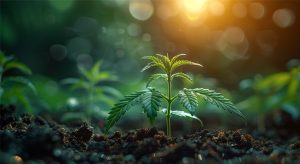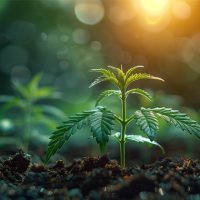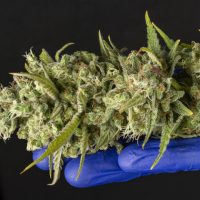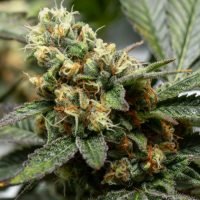Growing cannabis outdoors in Germany can be an extremely rewarding activity if you’re prepared to face the potential challenges that may arise.
Summer in Germany lasts from late June to September, and generally features pleasant, moderate temperatures that range from 10 to 25ºC.
The warmest months are usually July and August, with temperatures above 20 degrees that drop during the night, which tends to be cool.
While summer is characterized by long, sunny days, intense rains may occasionally occur. In addition, the climatic characteristics of each region vary, so southern Germany is typically warmer than the north, for example.
The greatest challenges when growing cannabis outdoors in Germany include the variability of the climate, changing temperatures, and fluctuating humidity levels. All of these are common and can negatively affect cannabis plants.
Challenge 1- Early arrival of autumn: How to prevent bad weather from ruining your cannabis crop
Summer in Germany is short, with temperatures usually starting to drop from mid-September. Cannabis plants need temperatures between 25ºC during the day and 15ºC at night to thrive.
In addition to this drop in temperatures, the early arrival of autumn also brings rains and bad weather that can ruin the crops of certain strains whose ripening stage extends into October.
Choosing Fast Marijuana Strains
Choosing marijuana strains with short flowering periods is definitely a key factor.
- Quick cannabis seeds: Some feminized strains are particularly quick because of their short flowering cycle, which makes them ideal for Nordic climates like that of Germany. These are strains whose genetic selection process results in particularly short flowering periods (between 6 and 7 weeks). Good examples of these are Jamaican Dream, Lemon King, and BCN Critical XXL.
- Fast marijuana seeds: these strains are just as productive as common feminized seeds, and are also photo-dependent (they need a change in the light cycle to start flowering); but their flowering period is two to three weeks shorter, meaning they can be harvested earlier. These strains include Cookies Fast from Seedstockers, which is ready to be harvested in mid-late September; or Think Fast from Dutch Passion, which is also harvested around the same time.
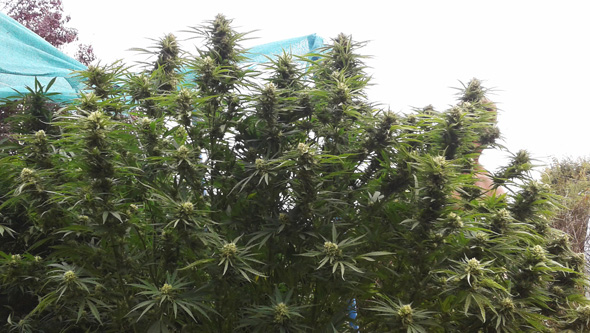
Autoflowering Marijuana Seeds: the Queens of Nordic Climates
Autoflowering seeds don’t depend on the amount of light that they’re exposed to to start flowering, and have very short life cycles, ranging from 60 to 90 days (from germination to harvest), depending on the strain.
These cannabis genetics changed the game and allowed growers living in cold regions with short summers to obtain abundant, high-quality crops in record time.
These include automatic versions of reputable strains like Gorilla Glue Auto from Barney’s Farm, which finishes its full life cycle in just 10 weeks; or Orange Kush Auto from Eva Seeds, a very special strain with a premium flavor that can be harvested in just 9-10 weeks (from germination to harvest).
Challenge 2- Sudden Drop in Night Temperatures
In order to develop properly, marijuana plants need temperatures that ideally don’t drop below 15ºC at night and don’t exceed 30ºC during the day.
In Germany, nighttime temperatures can sometimes drop to 10ºC during the summer, which may complicate or hinder the plant’s metabolic processes and affect its bud production.
To solve this problem, you can use the following strategies:
- Select resilient genetics: Choosing cannabis strains that can better tolerate low temperatures is key if you want to grow outdoor cannabis during the summer months in Germany. Varieties like Northern Lights Auto or Original Auto White Widow from Fast Buds are perfect for this.
- Protect your marijuana plants: You can protect your plants from the cold at night using some type of cover, like agricultural plastic or a small greenhouse. If your grow occupies a large space, you can always create a greenhouse and use thermostat heaters to keep your grow at a constant temperature during the night.
- Maintain the temperature of the soil: By applying what is known as the “mulching” technique, where a layer of certain organic materials is placed on the substrate (straw, for example), you’ll be able to retain solar heat during the day, which will be released gradually overnight, keeping the soil and your plants warmer.
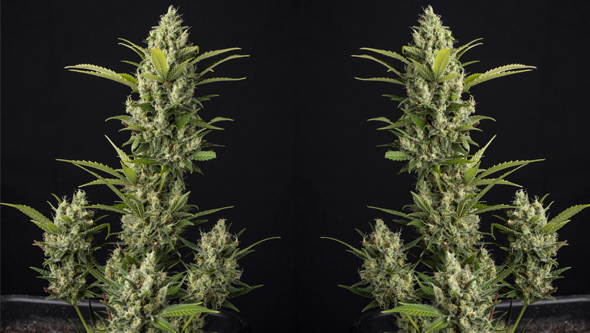
Challenge 3- Sudden and Heavy Rains: Preventing Mold in Cannabis
As previously mentioned, it is not unusual for heavy rains to catch you off guard during the summer in Germany.
A soil that’s waterlogged for too long can be fatal for any cannabis strain, as excess water in the roots can “drown” the plant, preventing its proper development.
This is of particular concern for autoflowering strains. As they have a limited life cycle, this may result in irreparable damage, or the growth of the plants may stop altogether : Every wasted day will reduce the quantity and quality of the crop.
In addition, rain and high humidity levels can be the perfect breeding ground for fungi such as powdery mildew or botrytis.
To prevent these problems, try these tips:
- Ensure your plants have good drainage: Make sure the substrate is well aerated and drains well, particularly if you’re going to grow autoflowering seeds. Having said that, this is important for all types of cannabis. You can use a mixture of soil and other less dense substrates, such as coco coir, arlite, or perlite, in a ratio of ¾ soil and ¼ coco coir, for instance.
- Prune and ventilate your marijuana grow: Observe the structure of your plants to determine if it’s dense and compact. If this is the case, you can do some pruning or training to open up the structure and provide better air circulation in your grow. However, autoflowering strains shouldn’t be pruned or trained since they don’t have sufficient time to recover (their vegetative phase is usually about 4 weeks). At most, you can apply the Lollipop technique to remove the lower and unproductive branches. Avoid bunching all your plants in a small space to prevent them from touching each other, thereby ensuring good air circulation to prevent fungal diseases.
- Use protective coverings: You can prevent your plants from getting too wet by covering them with plastic tarpaulin when it rains.
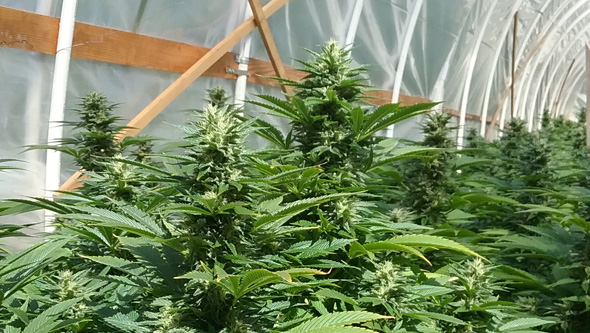
Challenge 4- Climatic Variability: Expect the Unexpected
Preparing yourself for any environmental setback will be key to the success of your grow. Prevention is always the mantra of a good cannabis grower.
Therefore, if you’re going to grow your marijuana plants using automatic irrigation systems, you need to adjust the parameters to the changing weather conditions (rain, days of excessive heat, etc).
You can have days that seem like autumn has arrived, as well as days with very high temperatures (exceeding 30 degrees) that catch you by surprise. If this is the case, keep a sunshade or shading mesh at hand to provide shade to your plants during the hottest hours of the day to prevent thermal stress.
Anticipating the setbacks of your local climate and being able to adapt strategies according to them will be key if you want to grow outdoor marijuana in Germany. Use weather apps to anticipate potential weather changes and adjust your grow conditions accordingly.
Conclusion
Adapting to the climatic challenges of the German summer involves a combination of a good selection of cannabis seeds, paying attention to the changing weather, and applying preventative and adaptable techniques. With a bit of care and attention, you can be certain that your plants will flower, rewarding you with aromatic and high-quality crops. Therefore, protecting your grow is the best recipe to maximize the productivity of your cannabis plants.

